4 - Y de aquí y de allá [part 1]
Apologies for the delay...I've been gallivanting around our neighbor to the South.
A while back I had promised myself that I would visit the capital of Mexico for my 24th birthday. I was exactly one week late — it’s okay, it’s Mexico. On June 11th, I departed for Mexico City (a.k.a. México, la Ciudad, el DF), which was a straight 4-hour shot from Denver.
This was made budget-friendly (and also highly structured) thanks to PICV 2023, a cultural immersion volunteer program hosted by the Mexican government — the Secretary of Foreign Affairs and the Institue of Mexicans Abroad. The program slogan was conociendo mis raíces, so basically “getting to know my roots.” All I got to say is that shit worked.
Touring Mexico City
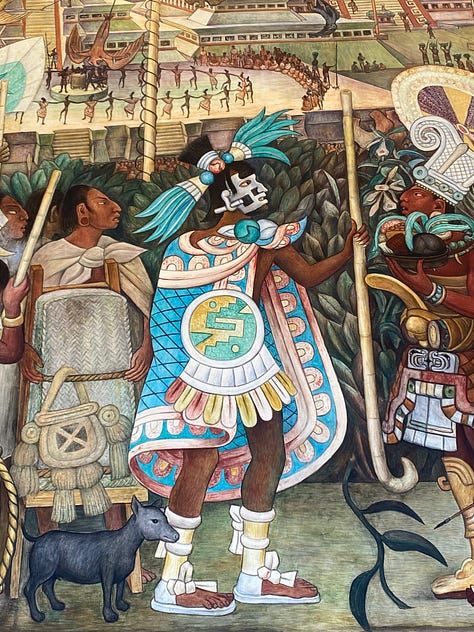
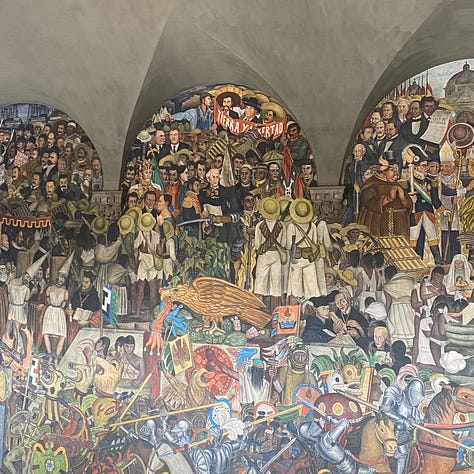
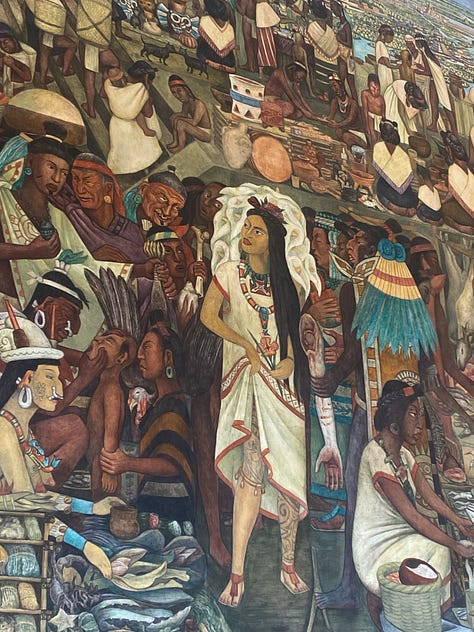
It wasn’t only the places we visited nor the things we did, but also the truly strong, inspiring, and badass people I met in those 3 weeks that helped heal my lifelong identity crisis. I joined 60-something other young people of Mexican descent on this adventure, few of us knowing what we were really getting ourselves into. Here’s the scene: 4 days in Mexico City, 2 weeks in my family’s home state, and the last 3 days back in the capital of Mexico.
Visiting Michoacán
There were 7 different states you could be placed in by the program, and I was assigned Michoacán, which is at a level 4 DO NOT TRAVEL travel advisory warning according to the US Department of State. This is my mom’s home state — she’s actually from the world capital of avocados, Uruápan, Michoacán.
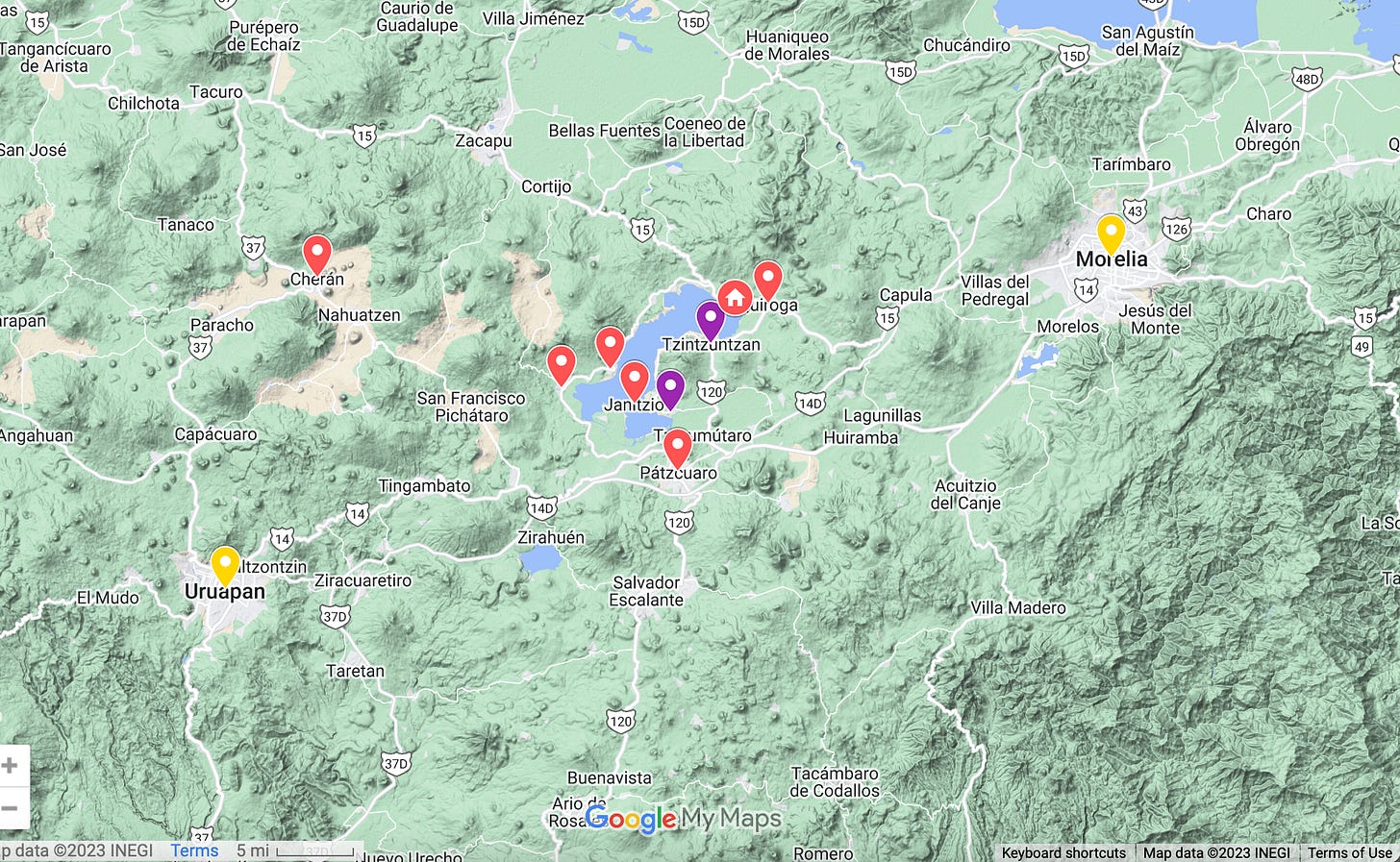
Our first destination was Morelia, the capital of Michoacán. The ride there was a little scary for some. One of the participants on the trip was absolutely terrified — she barely spoke a word the whole 6 hours, and it seemed like her AirPods were tethering her to any semblance of security and comfort. This fear was prevalent in the beginning, and the main reaction I got from family and friends when sharing my plans was to come back alive. I felt safe during the whole program, and will go into more depth on this in the next post.
When we arrived in the capital, we toured a museum, explored the plaza, and ate some delicious food. Our stay was short (one night), but we had more freedom during this leg of the trip than we did in the beginning. My favorite part of touring Morelia was exploring the plaza at night — there was so much life. The classic architecture of the capital was even more gorgeous when accompanied by live music and people bustling around.
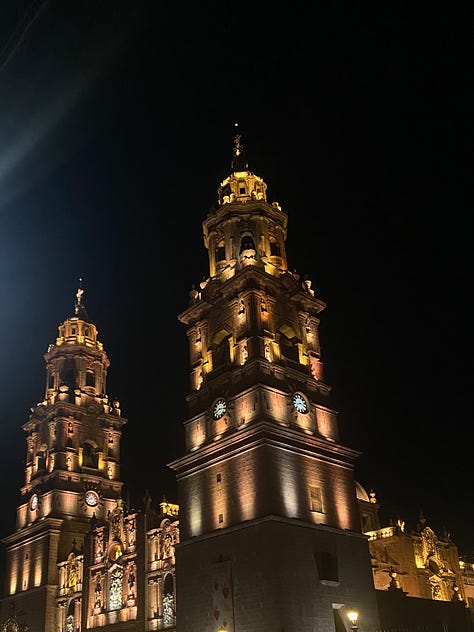
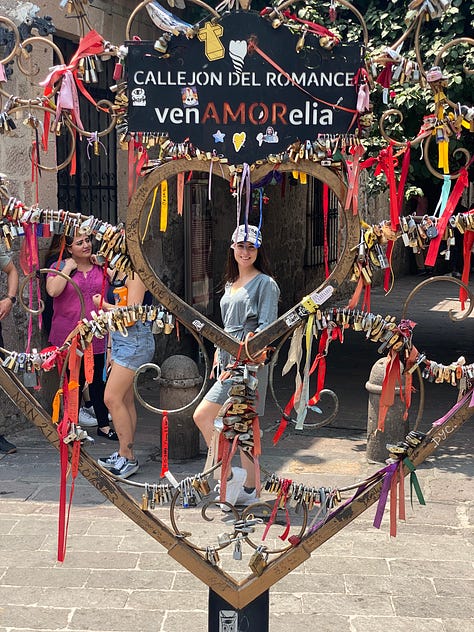

After Morelia, we made our way to Santa Fé de la Laguna. The pueblo is home to the indigenous Purépecha people of Michoacán, also called Tarascos by the Spanish. Their (also my) ancestors were some of the few who successfully resisted the Aztecs, and were eventually conquered by the Spanish.
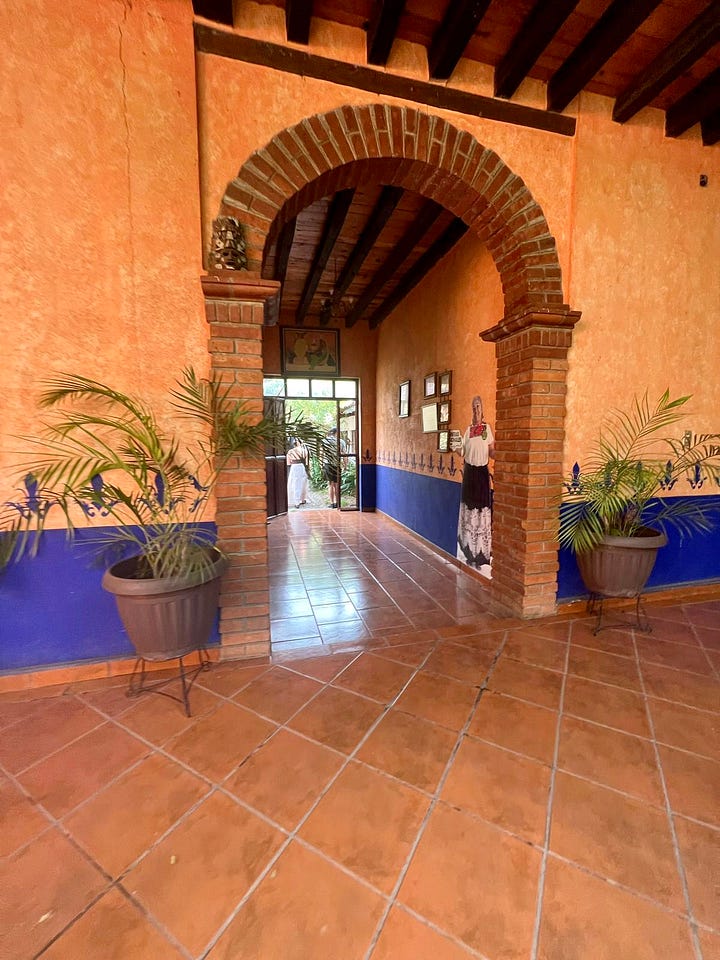
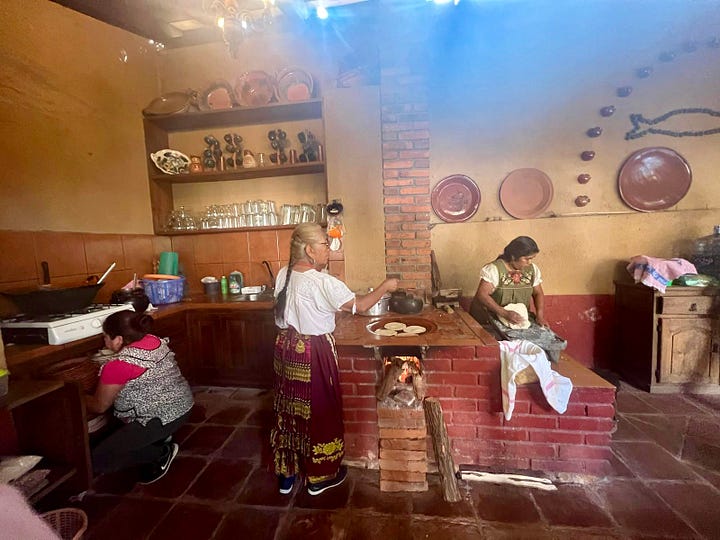
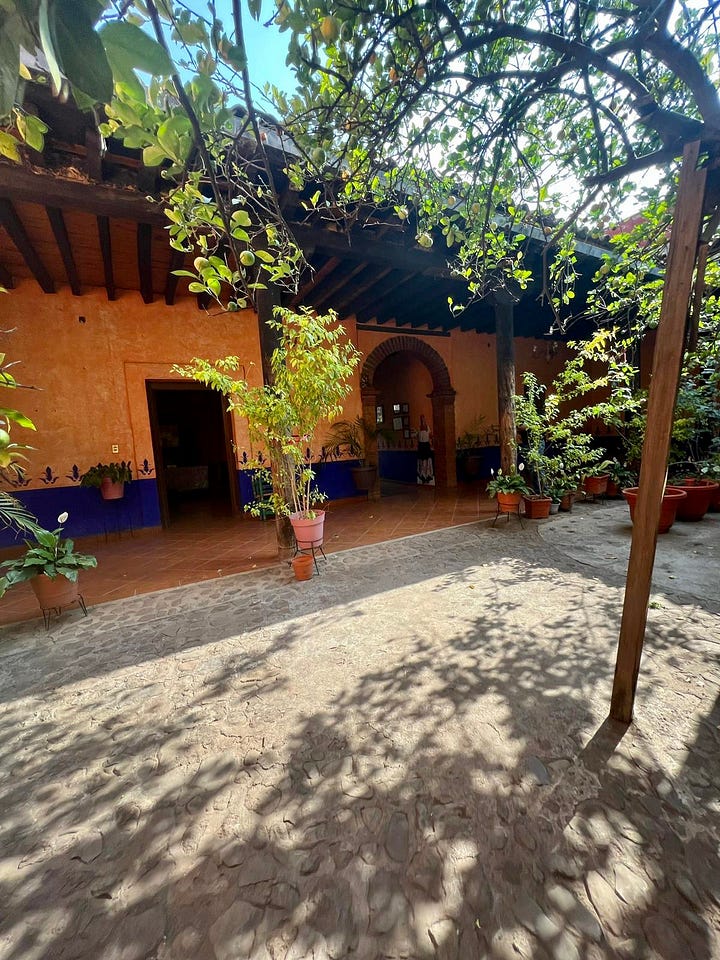
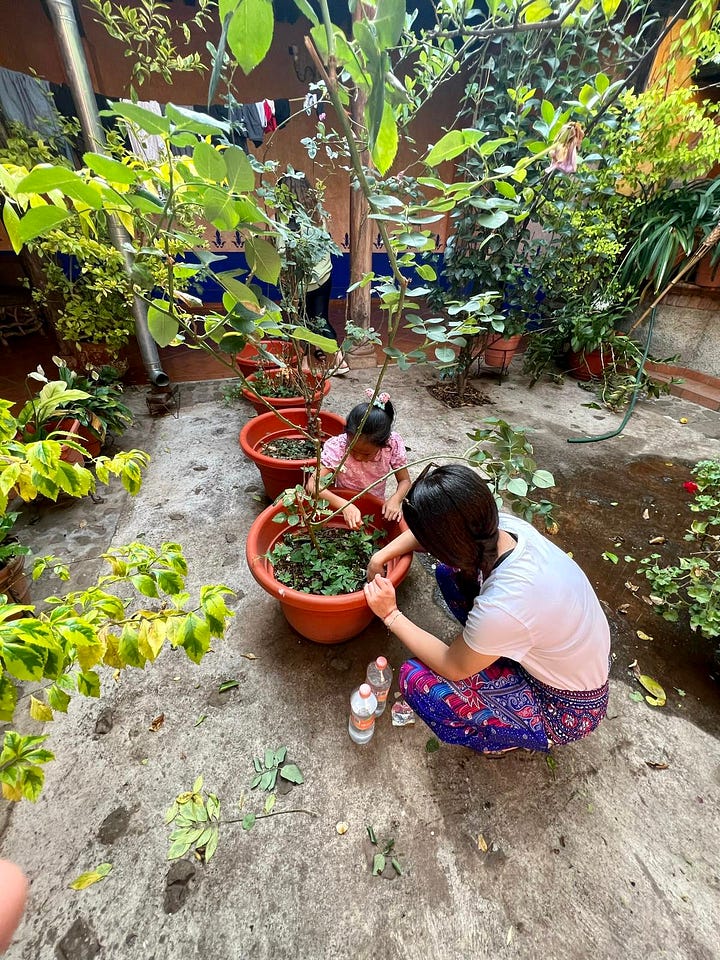
We stayed at the Hostal Echeri, pictured above, thanks to the generosity of the owner and her family. Our breakfast and dinner was prepared by a local that everyone endearingly called la Güera. By the end of the trip I felt close to the family that was working at the hostel. We would walk the older daughter to school, help prepare meals with la Güera, wash the dishes, and entertain both daughters when they were bored after school.
Santa Fé de la Laguna is also home to Mama Coco, one of the inspirations for the animated Disney movie Coco. We went to her home, which was at walking distance from the hostel we stayed at. They called her Señora Salud, and she was 109 years old when she passed away in 2017.
Our first week in Michoacán was dedicated to volunteering in the pueblo, although I spent the first couple of days visiting Uruapan with my family. We drove to Uruápan together (about 2 hours by car). I tried avocado paletas for the first time, as well as “bananas with bones” in the National Park, and the same tortas that my uncles would eat back in the day.

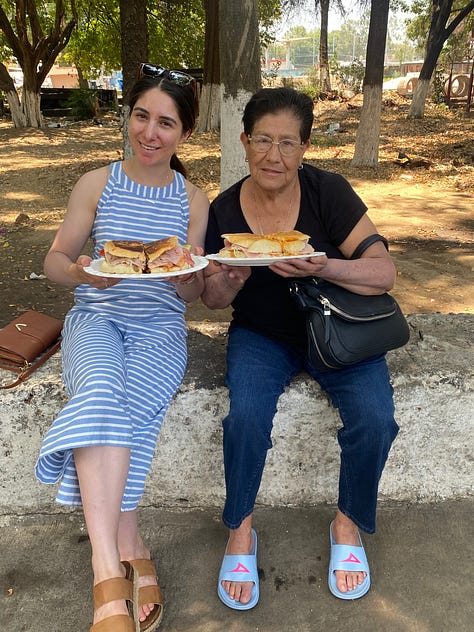

Upon arriving back in Santa Fe de la Laguna, I got to work with the rest of my colleagues. After all, the program is a cultural immersion and volunteer program! We had a variety of meaningful experiences, some of which I will cover and share on below.
Volunteering in Michoacán
Our work started at a festival for traditional dance and music in Pátzcuaro, a pueblo mágico. Our job was to help set up and publicize the event in the local plaza. The video above depicts young artists dancing el zapateado, a traditional dance native to the state of Michoacán. In hindsight, the tradition has carried on — my family puts on their cowboy boots and shows off their modern version of the zapateado at every wedding or
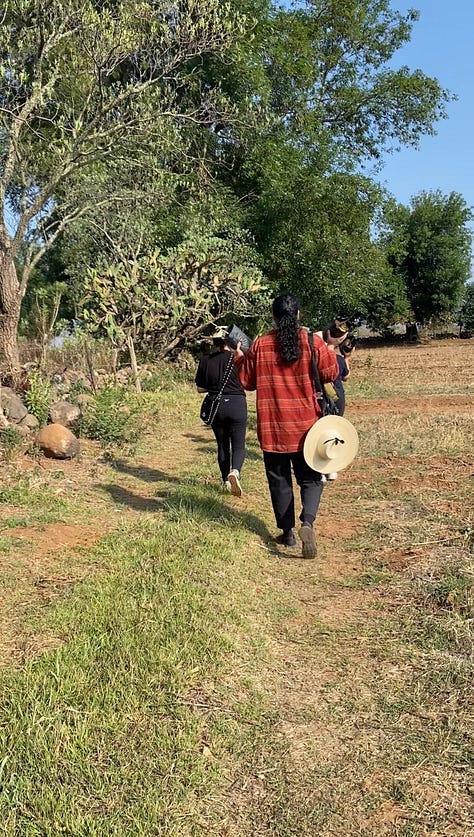
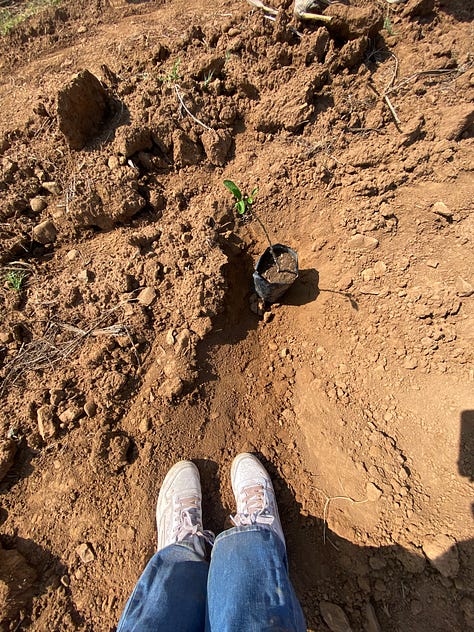

The next couple of days were filled with old-fashioned hard work. We planted lemon trees in a community plot in Santa Fé de la Laguna. We also helped prepare the soil for future planting, and counted the squash, peach, apple, and agave already present. The farmer we received instruction from is paid about 200 pesos every day, regardless of how much work he does. Sometimes there is a delivery of 100 trees and they all need to be planted in one day. I only planted one sapling, and if you know how backbreaking that can be, you can understand my shock.
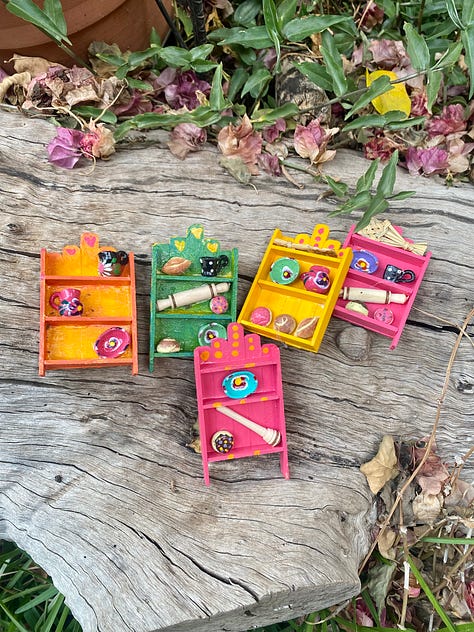
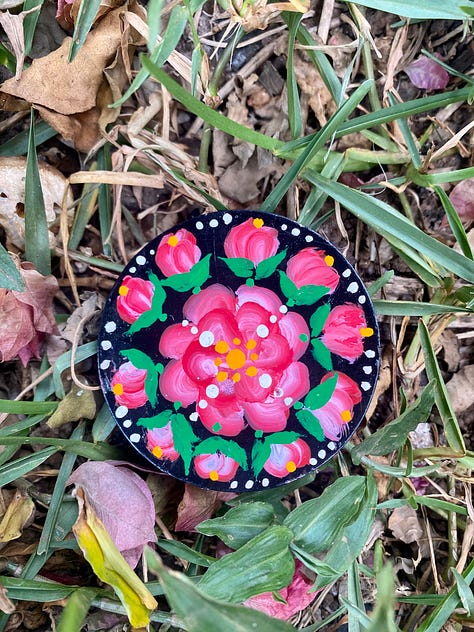
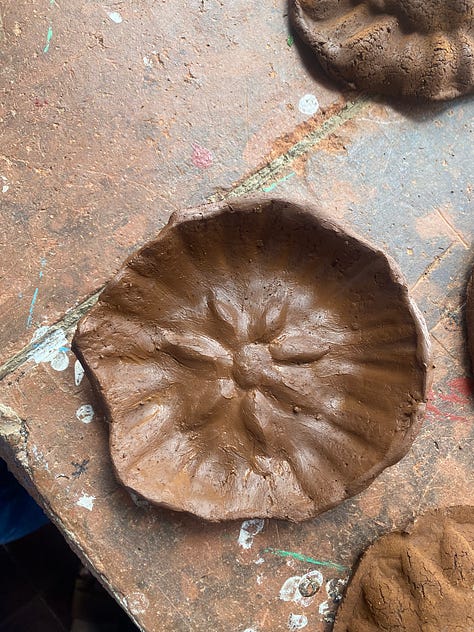
The images above are of different art and craft pieces, most of which I made. The left image depicts refrigerator magnets the group made from popsicle sticks. The host family we stayed with, along with many others, create small pieces for tourists to buy in larger cities. The center is a batea, a decorative wooden plate that is hand painted with extreme detail. This one was challenging, and they are often made with much more detail. The right clay piece was one of many that we had the chance to make with local artisans. More on that in the next post!

